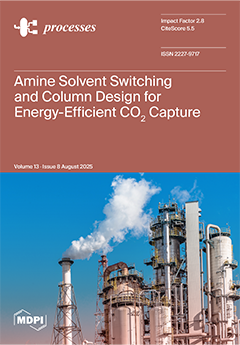To reduce CO
2 emissions, CO
2 geological storage is recognized as an effective approach to decrease atmospheric carbon concentration. Sequestration in deep saline aquifers has become a research focus. However, the physicochemical property changes in saline formations induced by CO
2 injection remain unclear, making it difficult to assess their CO
2 storage potential. This study focuses on saline aquifers within the Jurassic Badaowan formation (J
1b), Sangonghe formation (J
1s), and Cretaceous Tugulu Group (K
1tg) of the Baijiahai Uplift in the Junggar Basin. An integrated methodology combining laboratory experiments—including CO
2 static immersion tests, dynamic displacement tests, X-ray diffraction (XRD), mercury injection capillary pressure (MICP), nuclear magnetic resonance (NMR) measurements, and mechanical testing—with CMG-based numerical modeling was employed to analyze CO
2 storage mechanisms and evaluate storage potential. The results show that after CO
2 immersion, extensive dissolution of calcite in J
1s, clay swelling/cementation in J
1b, and extensive dissolution of calcite in K
1tg all lead to increased porosity and permeability, with the J
1b formation exhibiting superior CO
2 storage capacity, the highest MICP-derived porosity, and the greatest NMR-measured porosity among the three formations. Numerical simulations further confirmed J
1b’s leading sequestration volume. Based on integrated experimental and simulation results, the J
1b formation is identified as the optimal reservoir for CO
2 storage. However, to manage potential mechanical instability during real-world injection scenarios, injection pressures and rates should be carefully controlled and continuously monitored to avoid formation fracturing and ensure long-term storage security. This study provides a reference for implementing saline aquifer CCUS projects.
Full article





